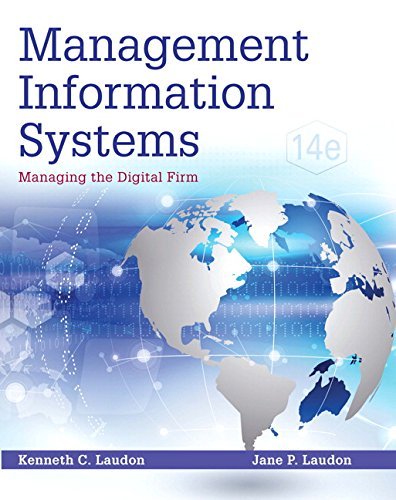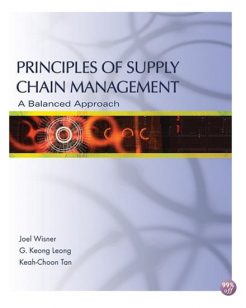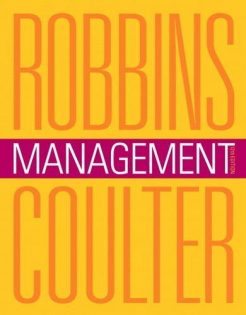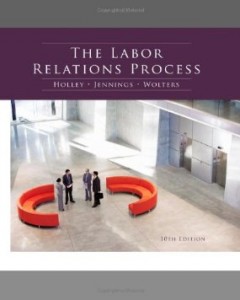Description
Management Information Systems Managing the Digital Firm Laudon 14th Edition Solutions Manual
Management Information Systems Managing the Digital Firm Laudon 14th Edition Solutions Manual
***THIS IS NOT THE ACTUAL BOOK. YOU ARE BUYING the Solution Manual in e-version of the following book***
Name: Management Information Systems Managing the Digital Firm
Author: Laudon
Edition: 14th
ISBN-10: 0133898164
Type: Solutions Manual
– The file contains solutions and questions to all chapters and all questions. All the files are carefully checked and accuracy is ensured.
– The file is either in .doc, .padf, excel, or zipped in the package and can easily be read on PCs and Macs.
– Delivery is INSTANT. You can download the files IMMEDIATELY once payment is done.
If you have any questions, please feel free to contact us. Our response is the fastest. All questions will always be answered in 6 hours., most of the time within 30mins
We also faced similar difficulities when we were students, and we understand how you feel.
But now, with the Management Information Systems Managing the Digital Firm Solution Manual, you will be able to
* Have your homework problems solved readily.
* Reduces the hassle and stress of your student life.
* Improve your studying and also get a better grade!
* Get prepared for examination questions.
*Can save you time and help you understand the material.
This is the quality of service we are providing and we hope to be your helper.
Delivery is in the next moment. Solution Manual is accurate.
Prepare to receive your Management Information Systems Managing the Digital Firm Solution Manual in the next moment.
If you have any questions, or would like a receive a sample chapter before your purchase, please contact us at inquiry@testbankcorp.com
Management Information Systems Managing the Digital Firm Solution Manual
Management Information Systems Managing the Digital Firm Laudon 14th Edition Solutions Manual ISBN: 0133898164
Chapter 3
Information Systems, Organizations, and Strategy
Student Learning Objectives
1. Which features of organizations do managers need to know about to build and use information systems successfully?
2. What is the impact of information systems on organizations?
3. How do Porter’s competitive forces model, the value chain model, synergies, core competencies, and network economics help companies develop competitive strategies using information systems?
4. What are the challenges posed by strategic information systems and how should they be addressed?
Learning Catalytics is a “bring your own device” student engagement, assessment, and classroom intelligence system. It allows instructors to engage students in class with real-time diagnostics. Students can use any modern, Web-enabled device (smartphone, tablet, or laptop) to access it. For more information on using Learning Catalytics in your course, contact your Pearson Representative.
Key Terms
The following alphabetical list identifies the key terms discussed in this chapter. The page number for each key term is provided.
Agency theory, 90 Primary activities, 104
Benchmarking, 105 Product differentiation, 95
Best practices, 105 Routines, 84
Business ecosystem, 109 Strategic transitions, 112
Competitive forces model, 94 Support activities, 104
Core competency, 107 Switching costs, 100
Disruptive technologies, 87 Transaction cost theory, 89
Efficient customer response system, 97 Value chain model, 103
Mass customization, 97 Value web, 106
Network economics, 107 Virtual company, 108
Organization, 82
Teaching Suggestions
The opening case, “Should T.J. Maxx Sell Online?” illustrates some of the ways that information systems help businesses compete and also the challenges of sustaining a competitive advantage. T.J. Maxx resisted developing an online presence for years even though almost all of its competitors had made the leap. Because of the nature of T.J. Maxx’s product inventory, one that varies from week-to-week, it risks alienating customers if they find too many out-of-stock items or they don’t find what they are looking for.
The retailer also risks alienating its suppliers who do not want to see their merchandise deeply discounted online. And T.J. Maxx risks cannibalizing its in-store sales, as do most other retailers. However, it can’t shrug off profit margins from online sales that tend to be higher by 7 percentage points than those from brick-and-mortar stores.
An interesting aspect of this case that jumps into the chapter’s material nicely is how companies find it necessary to change their business strategies over time, or at least fine tune them. This vignette illustrates how businesses must continually change their core strategy in response to changes brought about by their internal and external environment.
Section 3.1, “Which features of organizations do managers need to know about to build and use information systems successfully?” The chapter begins by dissecting an organization from both a technical and behavioral point of view. The technical definition focuses on three elements: capital and labor; inputs from the environment; and outputs to the environment. See Figure 3.2. The behavioral view emphasizes group relationships, values, and structures as shown in Figure 3.3. These two definitions are not contradictory. The technical definition focuses on thousands of firms in competitive markets whereas the behavioral definition focuses on individual firms and an organization’s inner workings.
All organizations have certain characteristics: routines and business process, politics, culture, reciprocal relationship with environments, and structure. Table 3.2 defines the five organizational structures.
All students belong to organizations of some kind. You can generate some dynamic discussions by having students determine the type of structure some of their organizations are. For instance, if they work at Starbucks, which organizational type is the company? If they work at a retail store, they may have a much different type of organization.
Perhaps the best, and most fun, part of this section focuses on disruptive technologies. Ask students to define other disruptive technologies they may have experience with other than just those in Table 3.1. For instance, electric cars vs. gasoline-fueled cars, iPods vs. CD players, and satellite radio vs. local radio, are all examples of disruptive technologies currently taking place.
Section 3.2, “What is the impact of information systems on organizations?” By understanding that information systems impact organizations in two ways, economically and behaviorally, students can understand that technological change is much more than just updating computer hardware and software. Technology becomes a substitute for traditional capital such as labor, buildings, and machinery. The transaction cost theory says that firms and individuals seek to economize on transaction costs much as they do on production costs. Information technology helps lower transaction costs by making it cheaper and easier to communicate and collaborate with external suppliers instead of trying to do everything in-house. The agency theory says that a firm is viewed as a “nexus of contracts” among self-interested individuals rather than as a unified, profit-maximizing entity. Information technology reduces agency costs by reducing the number of managers necessary to supervise the individual agents (employees). The impact of information technology on both of these theories shows why firms can reduce the number of employees while maintaining or increasing the levels of production.
From a behavioral standpoint, information technology flattens or reduces the levels of hierarchy in an organization because information flows more freely and more widely through the firm. Decision making is pushed to lower levels of the hierarchy. Managers make decisions faster and better because more information is available more quickly and accurately, thanks to information technology. Professional workers become more self-managing. Decision making becomes more decentralized. Workers rotate from team to team depending on the tasks at hand.
Now, ask your students these questions from the text:
• Who makes sure that self-managed teams do not head off in the wrong direction?
• Who decides which person works on which team and for how long?
• How can managers evaluate the performance of someone who is constantly rotating from team to team?
• How do people know where their careers are headed?
It’s very important for students to understand that the most common reason large IT projects fail is not the failure of technology, but because of organizational and political resistance to change. People simply don’t like change and will resist it in a variety of ways. Ask students to analyze companies that have struggled with major organizational change such as Daimler-Chrysler and even Microsoft. By understanding that the introduction of new information systems involves more than just plunking down new computers on employees’ desks, students can realize that new systems involve changes to tasks, organizational structure, and people.
Most importantly, information systems must be built with a clear understanding of the organization in which they will be used. What works for one company may not work for another. As information systems such as SAP and SalesForce.com proliferate, the danger is that these systems will not work in organizations whose structures aren’t a good fit. In those cases, the organization must align itself with the information system rather than the other way around.
Section 3.3, “How do Porter’s competitive forces model, the value chain model, synergies, core competencies, and network economics help companies develop competitive strategies using information systems?” This section is one of the most critical sections in the text. Understanding business strategy and how information systems can aid employees in making far-reaching and deep-rooted decisions is critical to the long-range success of any corporation. At this point, students need to focus on business-level strategies and the various ways firms achieve an advantage over other firms. They will learn how to use these strategies in order to address a key question: How can we compete effectively in a particular market?
The firm-level and industry-level strategies are analyzed in this section, and a key analytical tool, Porter’s competitive forces model, is introduced. The model focuses on four strategic areas: traditional competitors, new market entrants, substitute products and services, customers, and supplier intimacy.
It’s a great exercise to have students name businesses and companies that use information system strategies for dealing with competitive forces: low-cost leadership, product differentiation, focus on market niche, and strengthening customer and supplier intimacy. Ask your working students to describe the strategies pursued by their organizations.
Interactive Session: Technology: Nike becomes a technology company
Case Study Questions
1. Evaluate Nike using the competitive forces and value chain models.
Nike has traditional competitors in other clothing and shoe manufacturers but it has a deep reputation for continuously devising new products and services that make it hard for competitors to catch up. It also has a great deal of product differentiation that keeps customers coming back for more and better products than most of its competitors.
Nike has new market entrant competitors for its activity tracker worn on the wrist with Fitbit and Jawbone. But it has a competitive advantage over the two others based on the point system created in conjunction with the gadget called NikeFuel. The point system locks people into the Nike+ ecosystem of movement-tracking devices making it harder to switch to other wearable computing devices.
2. What competitive strategies is Nike pursuing? How is information technology related to these strategies?
Nike is using product differentiation, focus on market niches, and strengthening customer intimacies to enhance its competitive strategies against its competitors. By embedding so much technology in its products that are interconnected to one another, Nike has increased switching costs tremendously for its customers. If a runner should switch to another product line, many of the other products that person uses would be less valuable because they wouldn’t all be connected and transfer information and data between all the products.
Nike’s integration of information and information technology into its products keeps people coming back to Nike’s own Web site and apps.
3. In what sense is Nike a “technology company”? Explain your answer.
Nike is known for its leading-edge technologies to make its products more appealing and enhance user performance. It uses advanced technology to support sports superstars. It also developed the technology used in running shoes that use “supergases” encased in urethane plastic to provide superior cushioning for running shoes.
Nike has also embraced the Internet of Things in which individual devices such as sensors, meters, and electrical appliances are connected to the Internet so that their performance can be monitored and analyzed.
4. How much of an edge does Nike have over its competitors? Explain your answer.
Because it has so many useful and popular apps associated with its products, Nike has quite an edge over its competitors. Athletes like to track their progress and measure one activity against others. Nike’s apps and gadgets make that easy to do—easier than other Nike competitors. Nike provides many different channels through which users can manage their activities such as Facebook pages, online training programs, coaching tips, and daily workouts. Users of multiple Nike + devices can visit the nikeplus.com site to access all their data in one place—including lifetime NikeFuel points accumulated from all their Nike+ devices. No other sporting goods retailer offers that.
Interactive Session: Organizations: Identifying Market Niches in the Age of Big Data
Case Study Questions
1. Describe the kinds of data being analyzed by the companies in this case.
Data about e-book purchases and reading habits are being collected and potentially sold to book publishers. The data include whether a book is completed, if pages are skimmed or skipped, and which genres are most often finished.
Airlines are collecting all kinds of passenger data that can be consolidated to build comprehensive customer profiles. Cabin crews can then use the data to identify certain characteristics about on-board passengers and personalize the flying experience.
Car companies integrate databases and use complex algorithms to more closely match car lot inventory to buyer demand. Vehicle turnover rates improve and the price a consumer pays minus the manufacturer subsidy rise, increasing Ford Motor Company’s profits. Using vehicle Internet connections, the company intends to collect fuel economy data, mechanical failures, and other safety and performance metrics to improve product engineering. Ford estimates that by 2016 up to a third of all its consumer communications will occur inside vehicles.
2. How is this fine-grained data analysis improving operations and decision making in the companies described in this case? What business strategies are being supported?
E-book data: The idea is that writers can use it to better tailor their work to their readership and book editors can use it to choose which manuscripts to publish. Business strategy supported—focus on market niche, product differentiation.
Airlines: the data collected can enhance the passenger experience, improve customer service and fashion relevant marketing pitches. Business strategy supported—product differentiation, customer intimacy.
Car companies: which cars to build, which features to include or enhance, which cars sell better than others in different parts of the country. Business strategy supported—customer and supplier intimacies, product differentiation, focus on market niche.
3. Are there any disadvantages to mining customer data? Explain your answer.
Companies can mine too much data on customers to the point of upsetting customers and turning them against the company. Customers have complained that companies are collecting too much data and integrating it from too many sources. Companies defend their use of demographic data and data not covered under their privacy policies.
Even customers who accept the inevitability of profiling are miffed when they receive unsuitable offers based on faulty personal information. Most customers want a line drawn between data collection to facilitate useful offers and data collection that is too intrusive. Although some airlines have curtailed their use of data collected, they continue to collect it nonetheless. None of the airline carriers currently allow customers to opt out of their data programs.
4. How do you feel about airlines mining your inflight data? Is this any different from companies mining your credit card purchases or Web surfing?
Student answers will vary.
Section 3.4: “What are the challenges posed by strategic information systems and how should they be addressed?” This section reinforces the idea that information systems should be subservient to business objectives. Have students use the information in the subsection “Management Checklist: Performing a Strategic Systems Analysis” to analyze







Reviews
There are no reviews yet.